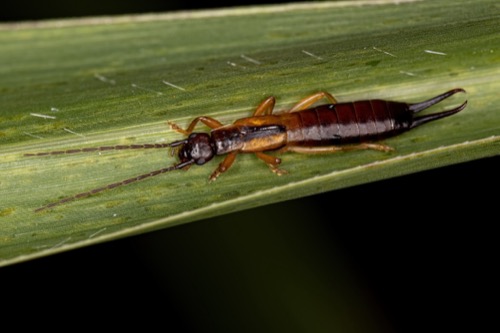Earwigs are an unwelcome sight around a home or garden. Although they do not bite or pinch humans, they can cause damage to desirable plants. We have some suggested methods for keeping these tiny nuisances away from your home or business. Once you have identified these "pincher bug" pests, read on to learn how easy earwig prevention can be.
Treat the Outside of the Home to Prevent an Earwig Infestation
To avoid finding earwigs--also called pincher bugs--in your home, one of the best means of protection is to apply a barrier treatment with an insecticide labeled for earwig control. By following the labeled directions for application placement and mix rates, you take the initiative and stop a potential infestation before it can start.
Protect your outdoor plants and reduce the chance that earwigs may find their way inside by treating the following areas around your structure:
- Under mulch or other organic ground cover where earwigs like to hide
- Under piles of wood or brick that may trap water and offer shelter to earwigs
- Around door and window frames
- Where plumbing pipes and electrical wires enter the home
- In the cracks and crevices of the foundation
Watch the video below to learn how to perform a barrier treatment.
Granular baits such as Niban are another effective option for outdoor barrier treatments in turf and landscaped areas around your home. Avoid using a residual-effect spray insecticide in the same area with granular baits, as that would eliminate the effectiveness of the bait.
Products needed for Step 1
Practice Integrated Pest Management
Follow a schedule for integrated pest management that includes sanitation, exclusion, and control, and you will always have the advantage against insect pests that may be outside your home or business. The key parts of a general pest prevention plan like the ones we suggest are listed below, along with a helpful video tutorial.
- Keep a 6-inch dry zone around the perimeter of your home, free of mulch or pine straw
- Trim branches and shrubs so that they do not touch your home
- Remove damp leaves and other debris around the foundation of your home
- Spray a general insecticide around the perimeter of your home
- Vacuum regularly to pick up food crumbs that might fall when you are cooking or eating
- Remove clutter inside to eliminate hiding places and shelter for pests
- Repair or replace broken vent covers
Read our general pest prevention guide and watch the video below for more information on how you can keep your home pest free.









